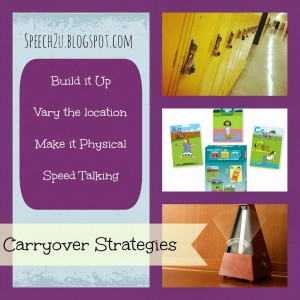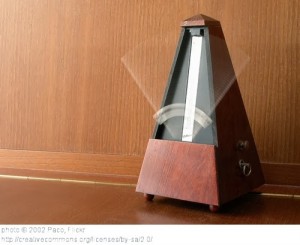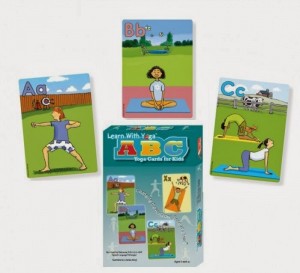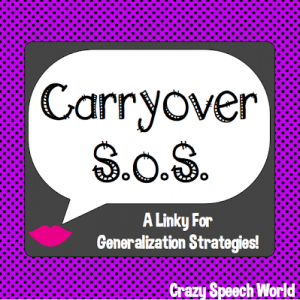I love it when a client comes in and has just started to produce the speech sounds we’ve been working on spontaneously. It doesn’t happen that often. Instead we end up at the carryover phase-or we end up with clients or students who seem to associate me with good speech. So they do great during structured sessions but have a really hard time transferring these skills to other environments. The super creative Jenn from Crazy Speech World is hosting a linky party for carryover activities. Here are four things I try to work on to facilitate carryover.
1. Build it Up within each session.
In traditional articulation, we achieve 80-95% accuracy at each level before increasing to the phrase, sentence, reading and then carryover level. This is definitely how I write my goals. Sometimes I like to combine articulation with more of a “phonological” activity approach. So if I’m working with a client who is practicing the /s/ sound I would pick out 5 /s/ cards. Initially I will try to make sure that these are phonetically controlled words or single syllable words so that they are easier to produce. We start the session working on the words at the single word level and then increase to the phrase, sentence level. We end with an activity or craft that incorporates our targeted words for the day.
2. Speed Talking
When we start teaching children to speak, we often slow down or exaggerate our productions. Speech articulation in conversational speech requires quick and refined movements. If your clients or students can’t say the phoneme quickly and without thinking-they won’t be able to produce it in conversational speech. The average person speaks 110-150 words per minute. Try using a metronome to practice syllable or word level productions at a faster rate. There are a lot of free metronome apps or you can use Metronome online. I start having them practice their speech cards or a set of 5 to 10 cards at a lower rate (ex. 80 beats per minute) and then work on increasing their ability to produce at a faster rate.
Stephen Sacks MA, CCC-SLP has a fabulous program called SATPAC which uses nonsense words and phonetically controlled word lists in combination with metronome practice to systematically teach speech articulation.
3. Make it Physical:
Automaticity is the ability to complete a task without involving the mind. When we are struggling at the carryover stage, I start to incorporate physical activities within the session. It can be as simple as practicing word lists while completing another activity which requires thought, such as building a lego set. If I have room, I try to incorporate some gross motor and balancing activities. I want the child to have to think about the activity more than they are thinking about their speech sounds (while producing them accurately). I have used balance boards or just had my clients stand on one foot. We may play a game of catch or incorporate some more complex ball passing activities from a program called Ball-a vis-x. I have a deck of Yoga cards and sometimes we will practice our speech sounds while attempting to maintain a yoga position.
4. Vary the location:
Speech rarely happens when sitting at a table directly across from other people. Our clients need to be able to produce their speech sounds in a variety of locations while moving or doing other activities. Sometimes we practice our speech sounds when walking in the hallway or playing in the gym or on the playground.
Do you have great ideas for carryover? Head over to Crazy Speech World to link up your ideas:
Those are some of the ways that I have practiced articulation and carryover skills. What do you use? If you found this post helpful, please consider sharing it on Facebook or pinning it using the buttons below.







Love these ideas! Thanks for linking up 🙂